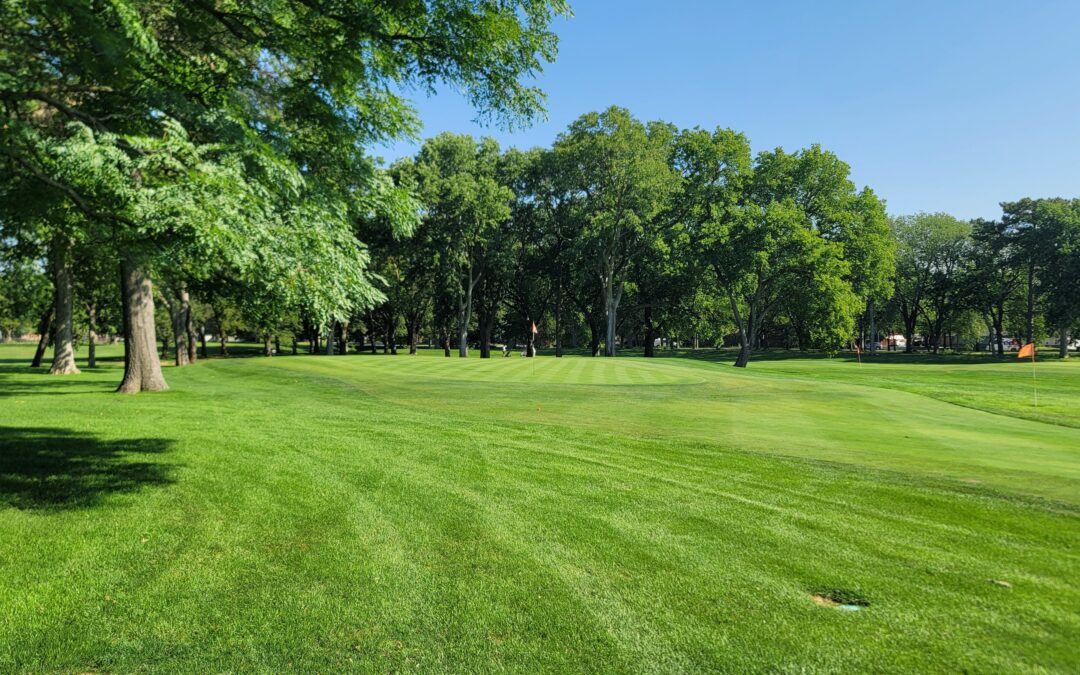I can assure you that this simple task, taking less than one minute each day, will provide valuable insight that directly impacts agronomic decisions. It is the most valuable piece of data that I collect, and it’s my biggest pet peeve when it’s skipped. This measurement predicts putting green performance, helps schedule mowing and topdressing frequency, and guides PGR and nitrogen application rates. It also helps me manage high and low performing greens differently. Still, there are a lot of questions about how to collect, log and use the data. This short article will help answer those questions.
It’s easy to be dismissive of clipping volume measurements, so let me explain why you should give it a chance in 2024.
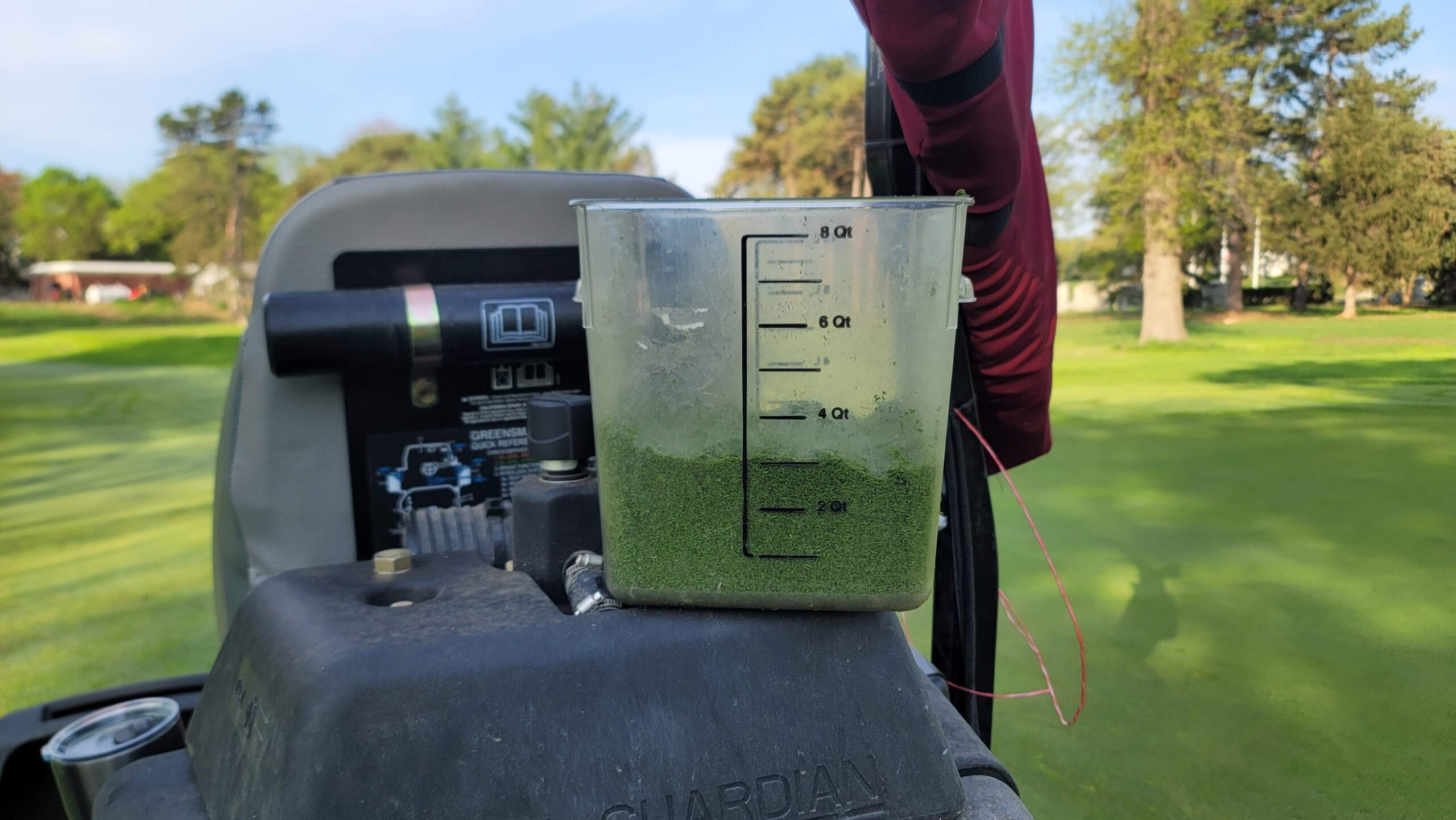
Assess the Efficiency of a Fertilizer Program
We re-apply fertilizer to replace nutrients that become unavailable to the grass plant. Clipping removal during each mowing removes a significant amount of nutrients from a turf system. Daily clipping volume measurements can be summed to calculate total clipping volume removed each year. Those totals can then be used to estimate annual nutrient removal from mowing. Compare those values to fertilizer additions, and you’ve created an easy estimate of fertilizer use efficiency.
In 2021, I applied 3.30 lbs nitrogen per 1,000 square feet of putting green area at Ager GC in Lincoln, NE. That season I also committed to measuring clipping volume from at least one green every time we mowed. By year’s end, we averaged 0.65 quarts of fresh clippings per 1,000 square feet – the unit is roughly equivalent to liters per 100 square meters. Total clipping volume removed was 185 quarts/1,000 square feet.
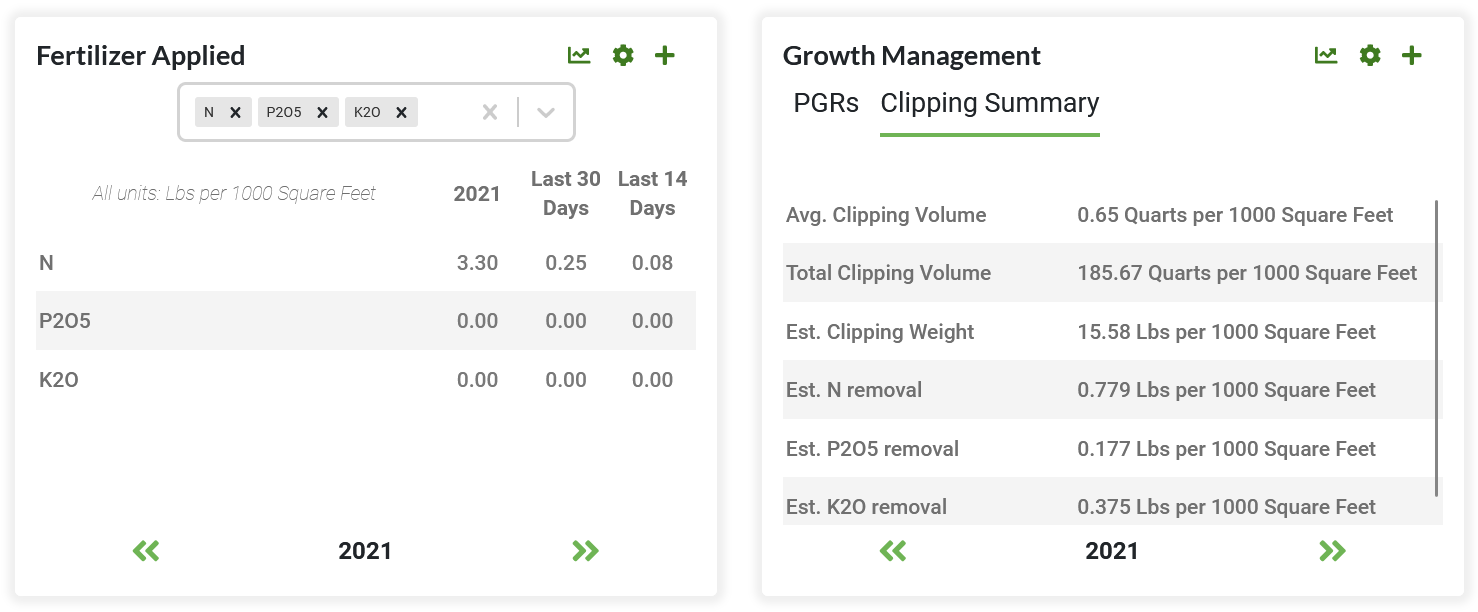
GreenKeeper App estimated 185 quarts of wet clippings weighed approximately 15 lbs once they were dried and clean of sand debris. It also estimated that 0.77, 0.12, and 0.38 lbs of N, P2O5, and K2O fertilizer were removed in those clippings, respectively. I was shocked. I had applied FOUR TIMES more fertilizer than I removed; 25% fertilizer efficiency. This didn’t seem sustainable. I could see the organic matter accumulating in the top inch during the season. I needed a new approach.
How and why did I apply so much nitrogen fertilizer in 2021? That season I consistently applied the maximum label-rates of Trimmit 2SC and Anuew to sustain high levels of suppression. When growth rate was too low – i.e. slow recovery from traffic/ball marks, increased moss and algae, discoloration/phytotoxicity – I would increase the nitrogen rate. It was similar to driving with one foot on the brake and the other foot manipulating on the accelerator! It was not an efficient way to manage growth, yet it isn’t uncommon for managers to schedule PGRs and fertilizer this way.
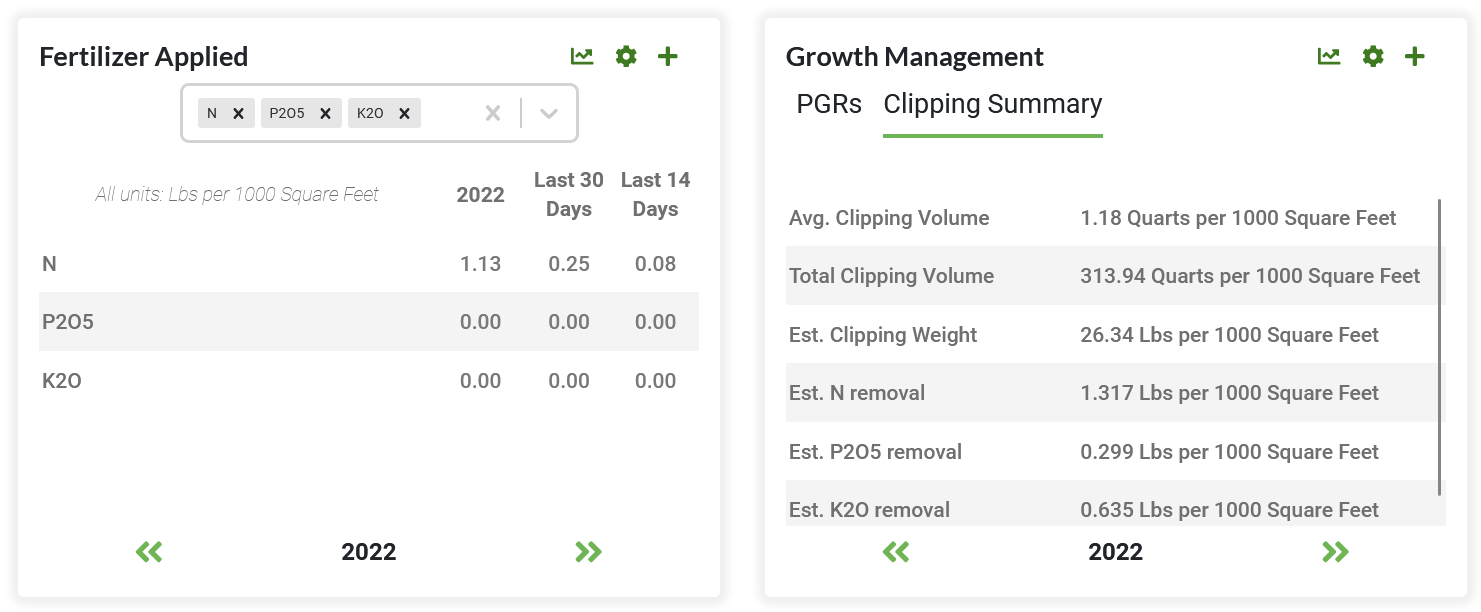
During 2022, I let the clipping volume measurements the dictate PGR rate. I increased PGR rates, tightened intervals and combined PGRs when clipping volume exceeded 1.5 quarts/1,000 square feet. I would reduce PGR rates and substitute rolling for mowing when the clipping volume fell below 0.7 quarts/1,000 square feet. I lightly applied nitrogen based on visual factors including stand density, traffic recovery, and color.
At the end of 2022, the daily average clipping volume increased to 1.18 quarts with no reduction in turfgrass performance. That equated to annual clipping volume of 314 quarts of removed or roughly 26.3 lbs of dry clipping mass removed per 1,000 square feet of putting surface. A total of 1.13 lbs of nitrogen fertilizer was applied to the greens that season, and an estimated 1.32 lbs of nitrogen fertilizer was removed in clippings. That’s a more sustainable value. I wasn’t actively targeting this equality during the seaon. I was simply watching clipping volume trends to adjust PGR and N fertilizer rates with each spray. It simply worked out that way at the end of 2022 and again in 2023.
What’s the Ideal Clipping Volume?
Like most things in turf management, it depends, but clipping volume goals quickly become obvious withing a few weeks of regular measurement. Remember when you first used a moisture meter? You stuck it into the green, pressed ‘Read,’ and it provided the soil moisture. What did that number even mean? It wasn’t until you took hundreds of readings, check wilting spots, measured moisture after a heavy rain or irrigation cycle that those number started to add value to your operation.
The same process will happen with clipping volume measurements. You’ll observe that low values might provide fast and firm playing conditions in the short term but also result in moss/algae/wear over a longer period. High clipping volumes result in greater thatch accumulation and slower/softer greens.
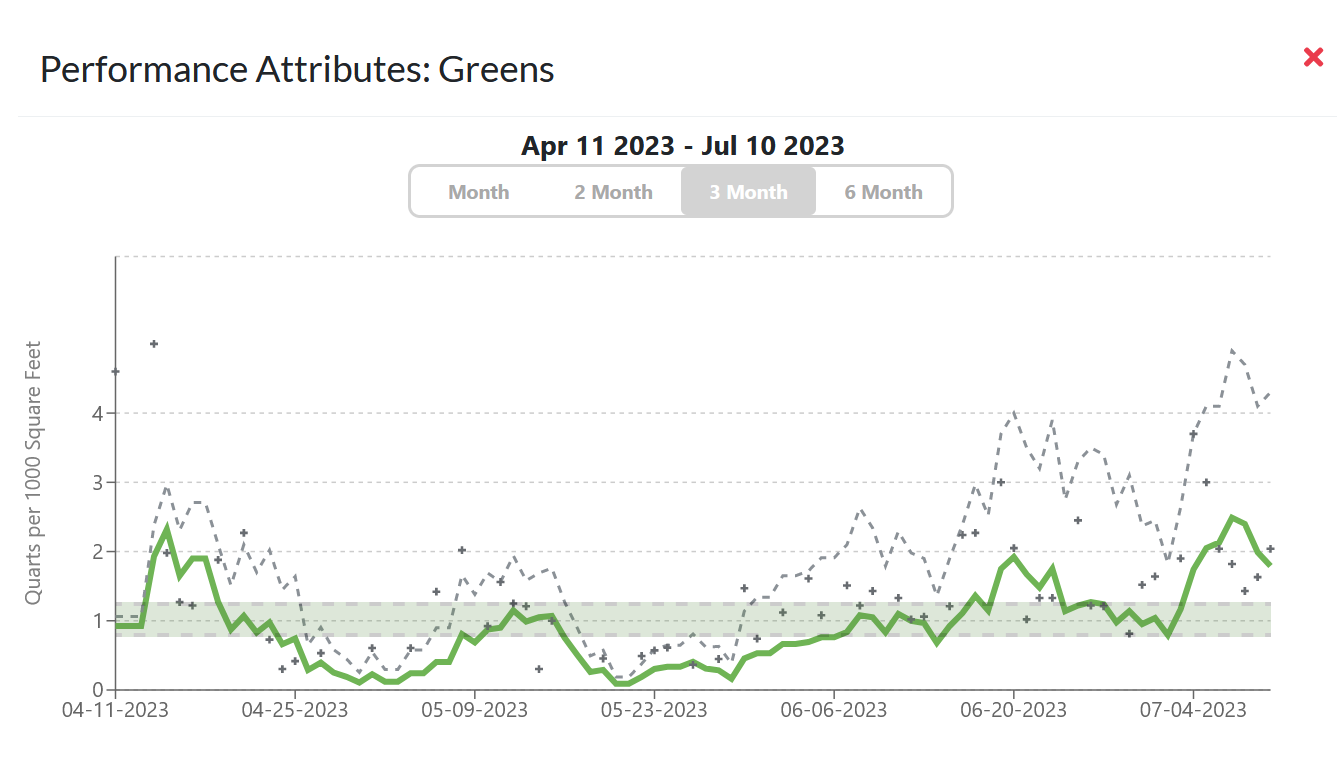
The Ager putting greens seem to do best when they have a daily clipping volume of 1.0 quart per 1000. While that has been my goal, I don’t try to force the clipping volume either. For example, cold spring and fall nights can stifle growth rate. It isn’t prudent to add more N here. Instead, I’ll back the PGR rate down and start skipping mowing. I’ll roll more to provide fast playing conditions. During hot and humid summer weather, soil microbes provide the grass with a wealth of nitrogen. In these scenarios, I’ll pull the fertilizer and tighten PGR intervals, use higher PGR rates and mix PGRs to enhance growth suppression. These mixtures are clearly displayed in GreenKeeper App. Sometimes you can only do so much.
Site-Specific Management from Clipping Volume Data
Clipping volume meaurements can be used to compare your best and worst performing greens. These measurement can then help implement site-specific management. For example, the most shaded green at Ager – Hole 5 – will grow 50% faster than the full sun green on Hole 9 during the spring. The grass on Hole 5 is literally trying to outgrow the trees. During this time, I will treat the 5th green with extra PGRs apps – maybe when treating tees, for example. During late August, the 5th green is growing 50% slower than the 9th green. In this scenario, I’ll skip the Trimmit on that green. I’ll create my mix without the Trimmit, spray the 5th green first, then add the Trimmit to the tank, and spray the other greens. That’s an example of actionable data.
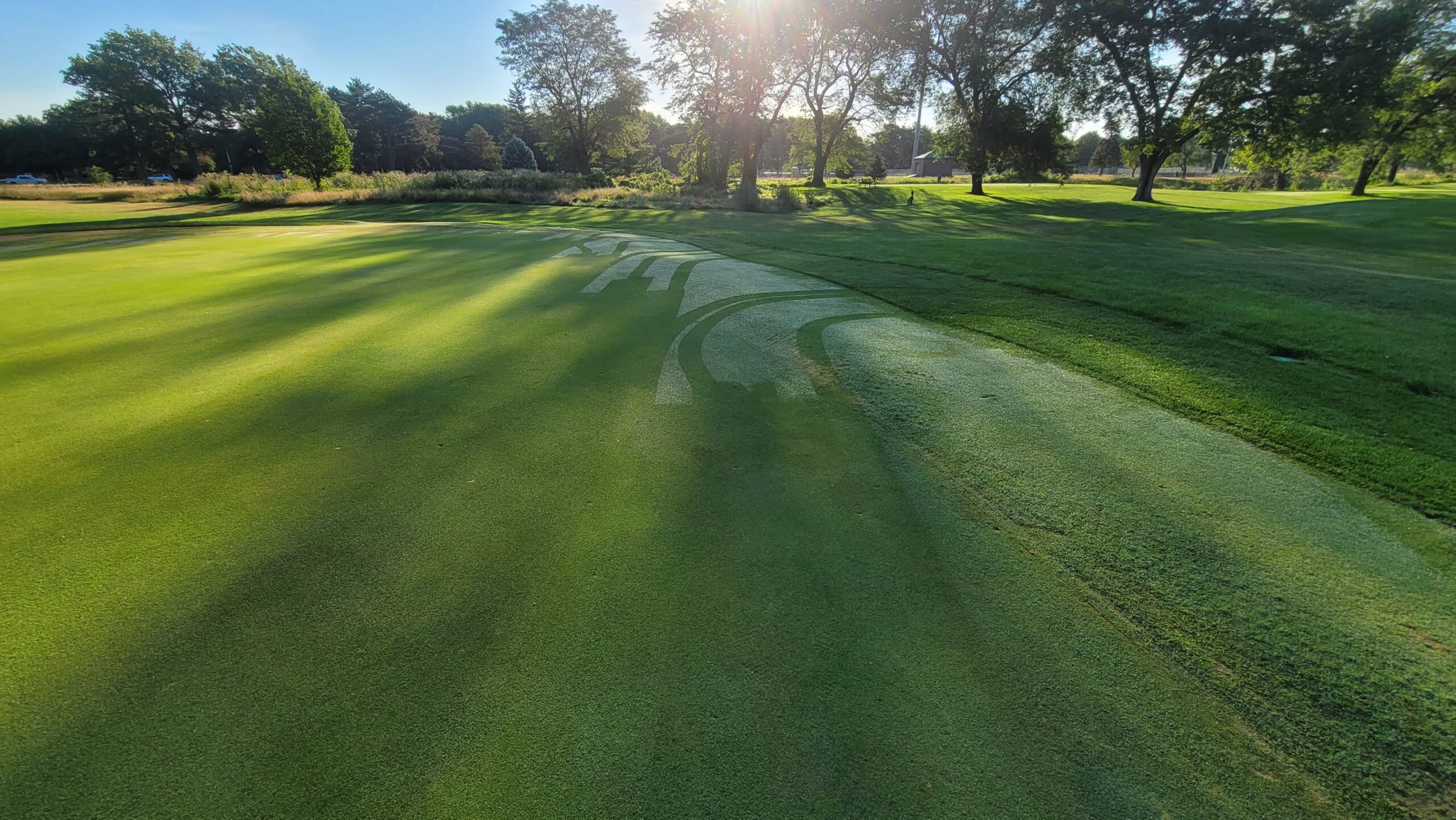
Clipping Volume is Easy to Collect – Seriously.
I frequently hear these excuses for not collection clipping volume daily:
- I don’t know how to do it.
- What am I supposed to do with the data?
- What will it tell me? How is it valuable? – I hope I’ve answered these questions in this article.
Here’s the “How-To” guide for collecting clipping volume.
Remember, the most important aspect of clipping volume measurement is consistent and frequent sampling. Don’t worry about day-to-day variability (i.e. at amount of morning dew or how to handle clean-up passes) because their effects will be minimized over hundreds of consistent measurements.
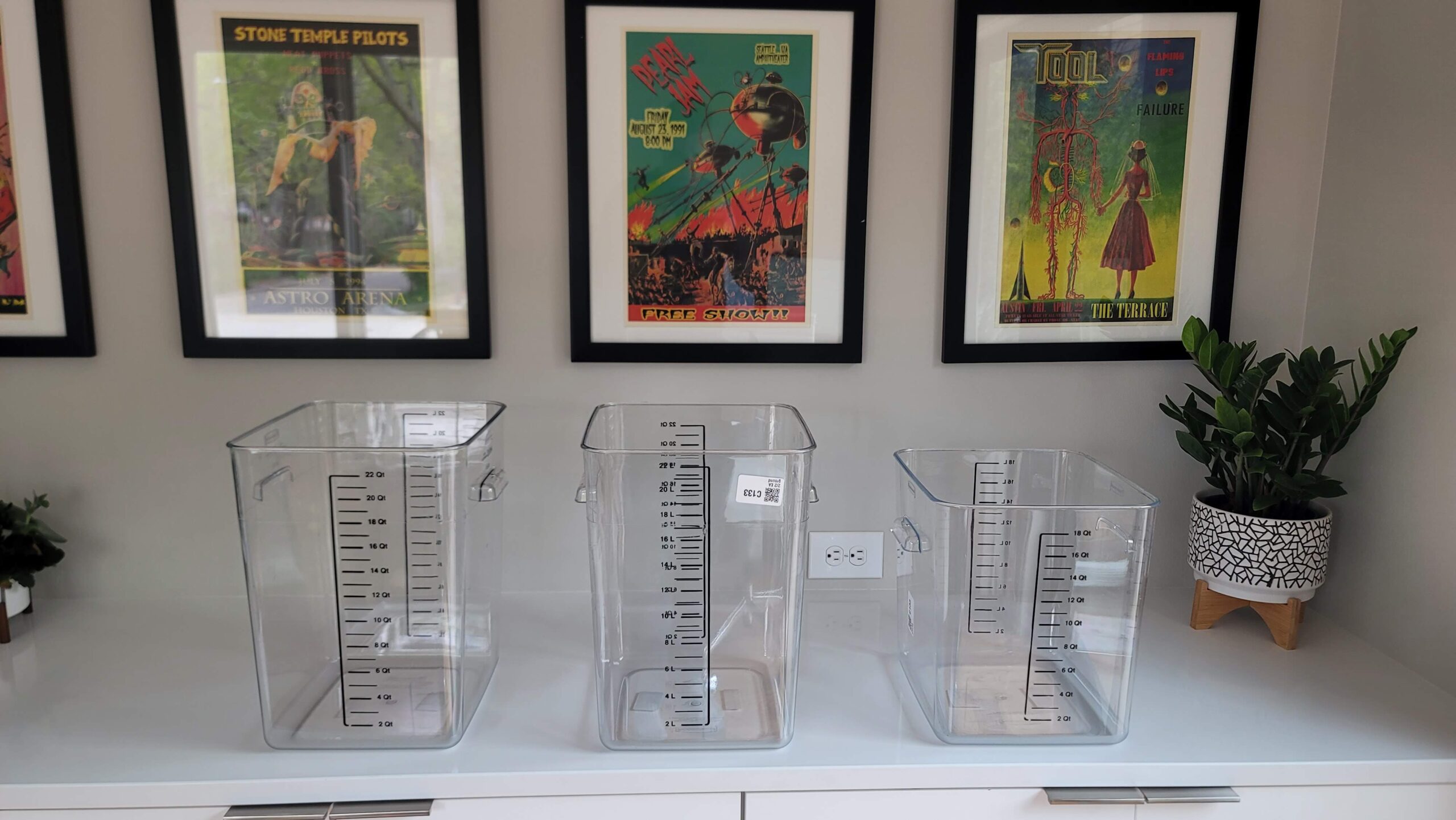
For the collection bucket, I prefer the clear Rubber Maid soup/stock buckets. They are square, strong and easy to use. The container size requirement depends on the size of area you plan to measure and your “normal” growth rate. I prefer the 8 quart size because I only measure clipping volume from the center bucket of the triplex and the greens are roughly 4,500 square feet (1,500 with the center bucket only). A course that walk mows large greens may need a larger capacity.
I’d suggest getting something that is three to four times greater than your ideal clipping volume multiplied by the size of your biggest green. For example, a walk-mowed 8,000 SQFT green targeting 1.0 quarts/1000 SQFT might select a 24 quart container (8 x 1 x 3 = 24).
My Typical Clipping Collection Process:
- The first green we mow is Hole 9, and it’s the green I measure daily. It’s ideal because the mower buckets are clean and the reels are sharp.
- Get off mower to replace the flagstick, and dump the clippings into the container.
- Lightly pat the clippings smooth, and estimate the clipping volume to the nearest half quart.
- Enter the volume into GreenKeeper App’s Performance Tracker on my phone, and proceed to the next green.
- Finally, empty the buckets before mowing the last green of the day – Hole 5. Repeat the collection process, and drive to the shop to measure ClipVol and wash up.
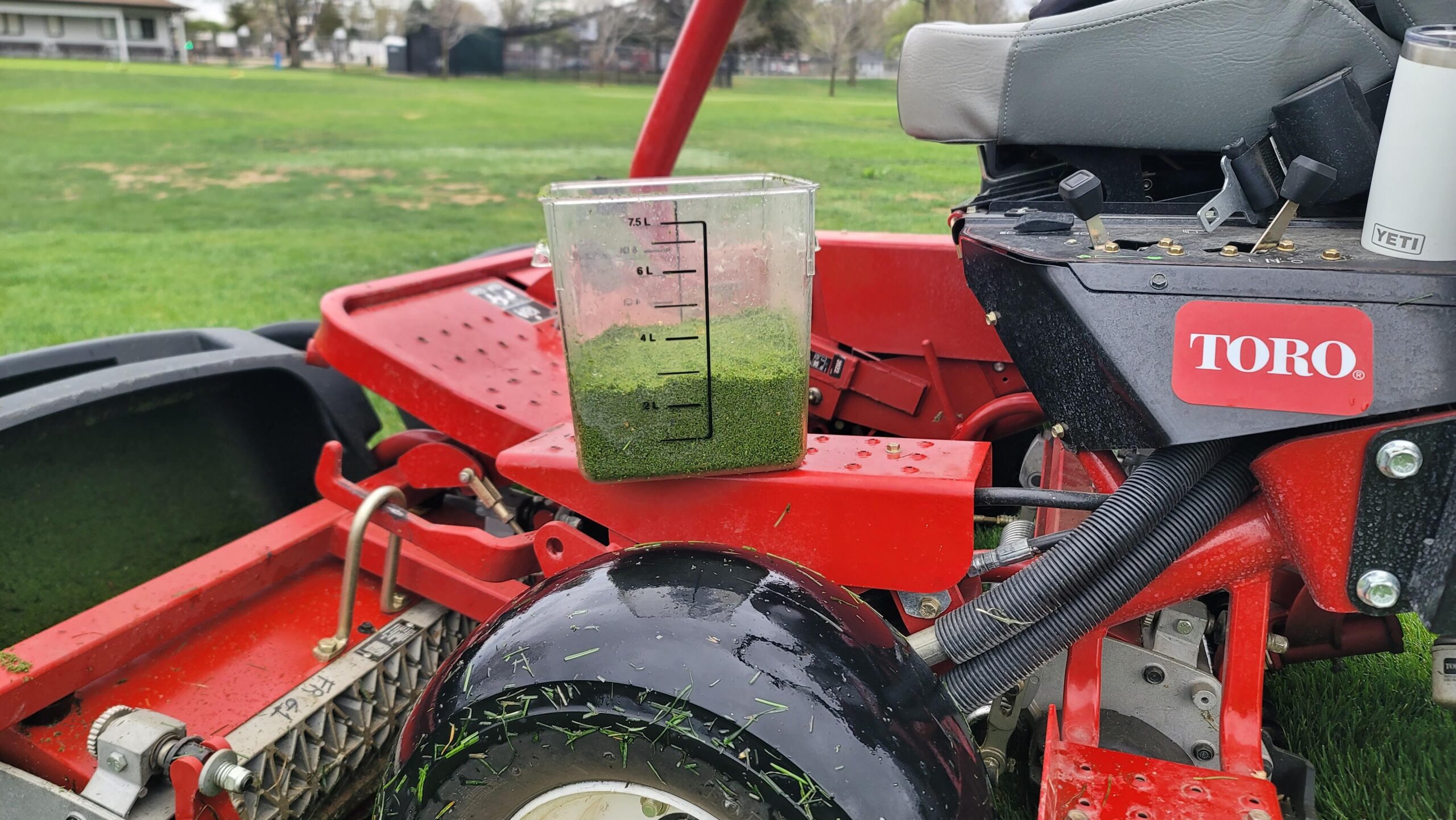
Tips and Tricks:
- Don’t over-think it. The grass you didn’t mow when you skipped cleanups for the day will get mowed/measured tomorrow. If there is a lot of sand in the bucket, just skip it for the day (or guess what it was without the sand). Don’t fret about different levels of dew. The Law of Large Numbers says the true average clipping volume will work itself out with lots of repeated measurements. The numbers are on your side.
- When using a triplex, only collect from the center bucket. Sure, you can add the three buckets together to calculate the clipping volume of a 5,000 square foot green. Alternatively, you can divide the green size by three and measure clippings from only the center bucket. There are advantages with consistent overlap from the other cutting units and minimized clean-up pass variability.
- Skipped a mowing event today? Don’t worry, tomorrow you’ll get that grass. We recommend managing based on the 5- to 7-day average clipping volume. GreenKeeper defaults to a 5-day average. This means the day-to-day variability will work itself out over those five days.
- Mowed but forgot to measure? In this situation, it is better to guess than leave it blank. GreenKeeper thinks a day with zero clipping volume either means no growth occured or mowing was skipped for that day. If you did mow, but a staff member forgot to collect the volume, then guess (or use the average value from the past few days). This makes the 5-day average more accurate than a value of zero.
- Start with Just One Green. Don’t over-complicate this. Pick a green that makes sense or best represents all the greens. You may want to measure a few from time to time to determine which green is most representative, but strive to measure at least one green with every mowing.
Some people like to collect data from every green. That is fine if your crew is onboard with the process, but it can quickly become an annoyance when the practice is new and different. I also think tracking every green becomes redundant at some point. I’m likely scheduling management based on the average clipping volume. What value do I get from analyzing 20 individual greens if I plan to manage them the same way? I don’t have an issue measuring more than a few greens, but don’t let it be come overly burdensome if they extra data isn’t being used in a meaningful way to guide management.
Commit this season to tracking clipping volume with every single mow. The data is very easy to collect and can provide valuable insight about your management program. GreenKeeper will do all the math and tracking. You’ll get immediate feedback that can be used to direct your maintenance plans.

